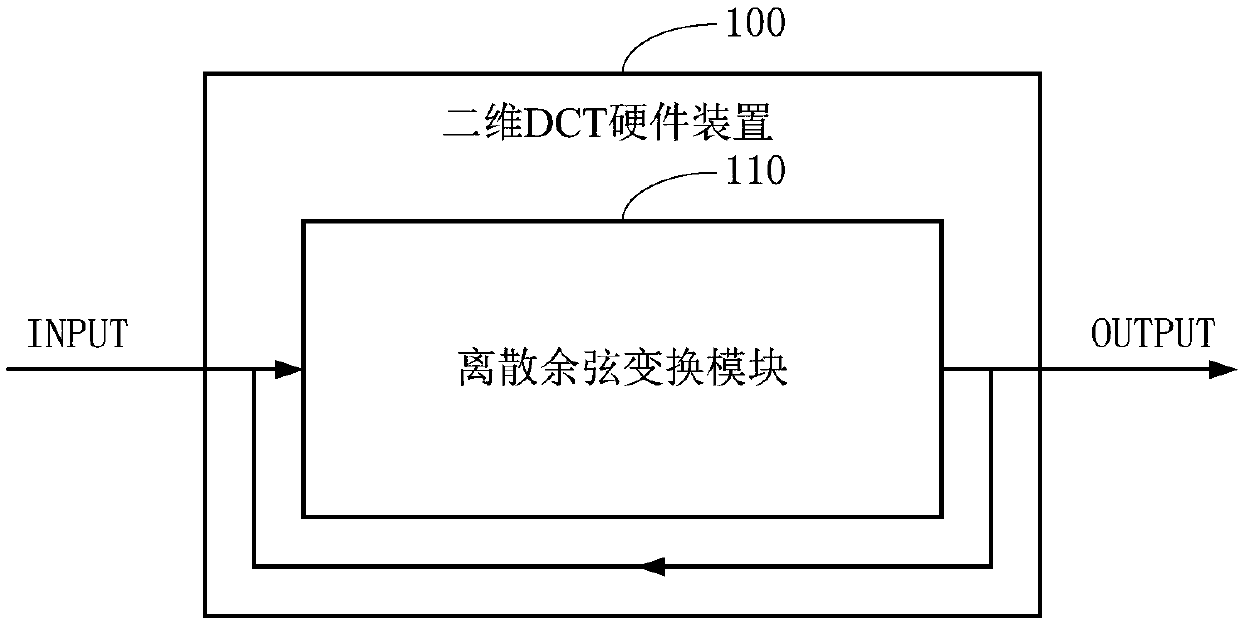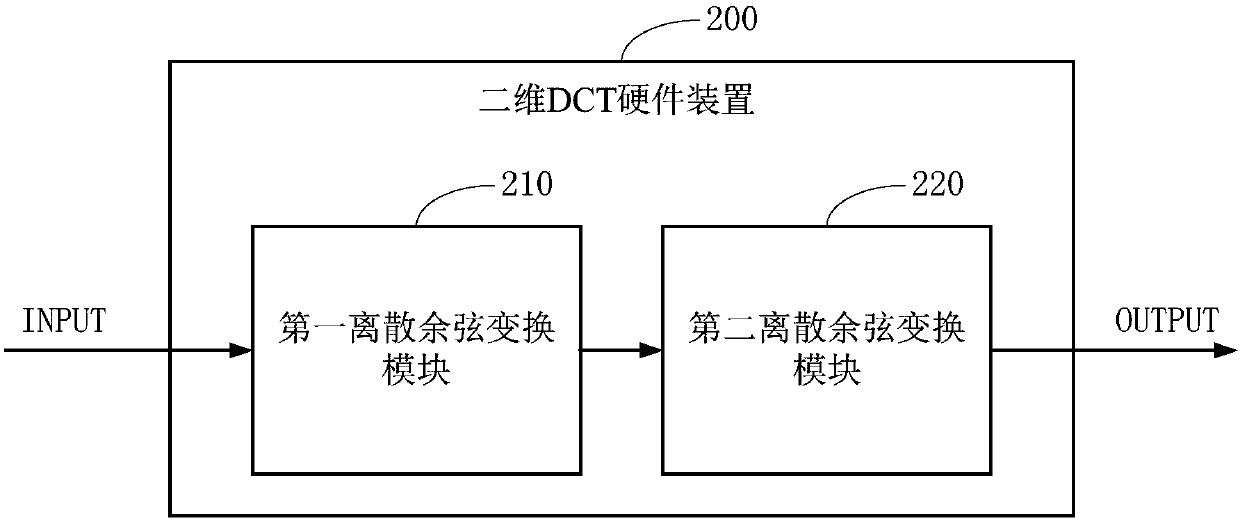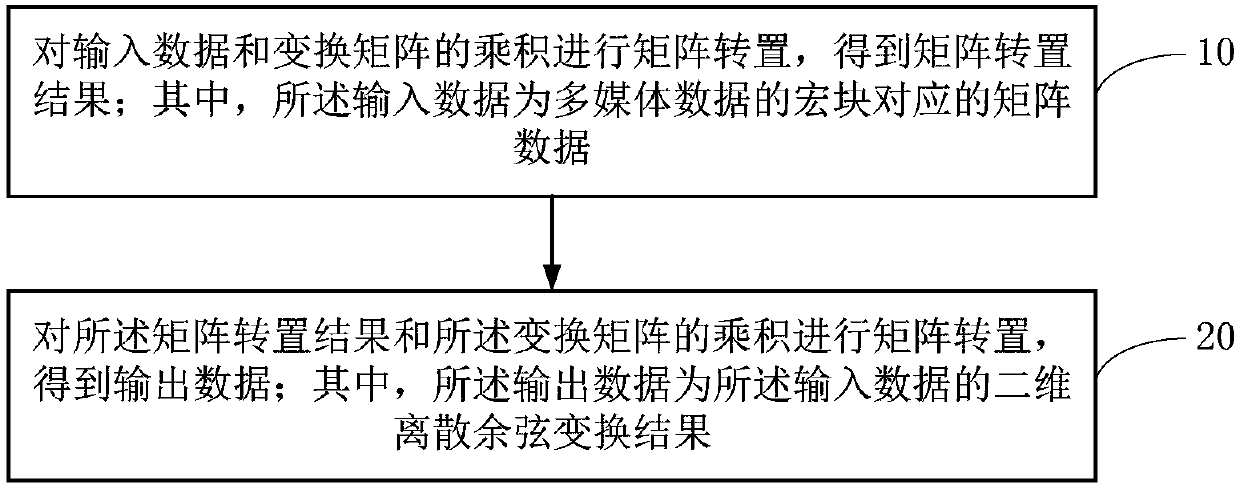Two-dimensional DCT (Discrete Cosine Transform) hardware implementation method and device
A hardware device and a hardware implementation technology are applied in the field of two-dimensional DCT hardware implementation methods and devices, and can solve the problems of inability to increase the main frequency of the system, the bottleneck of the speed of the compression algorithm, and excessive consumption of hardware resources.
- Summary
- Abstract
- Description
- Claims
- Application Information
AI Technical Summary
Problems solved by technology
Method used
Image
Examples
Embodiment 1
[0059] In the field, a broad sense of DCT includes 8 different types of definitions, among which DCT-II is the most common form. Unless otherwise specified, DCT usually refers to this type, and is generally referred to as Forward DCT. And DCT-III is the inverse conversion formula of DCT-II, generally also called Inverse DCT. The calculation formula of DCT-II is as follows:
[0060]
[0061] Among them, X represents the DCT calculation result, x represents the input data, k=0, 1,..., N-1 and k is an integer, N≥1 and a positive integer.
[0062] In practical applications, a variant formula of the aforementioned DCT-II calculation formula is generally used, which is also called a normalized DCT calculation formula. Specifically, the X in the above DCT-II calculation formula 0 Term multiplied by And multiply the rest by The variant formula is as follows:
[0063]
[0064] among them,
[0065] Since DCT is a separable linear transformation, two-dimensional DCT is equivalent to first p...
Embodiment 2
[0096] In this embodiment, based on the above-mentioned idea of implementing two-dimensional DCT through hardware, the traditional two-dimensional DCT algorithm can be simplified to the calculation of F(X) through hardware;
[0097] Among them, the calculation of F(X) includes two parts, one is to calculate Z=AX, and the other is to matrix transpose the result Z.
[0098] Based on this idea, the discrete cosine transform module, the first discrete cosine transform module, or the second discrete cosine transform module can be further refined into two pieces of hardware to realize the calculation of Z=AX and the matrix transposition of the result Z respectively. .
[0099] The specific structure of the two-dimensional DCT hardware device provided by this embodiment will be described in detail below with reference to the accompanying drawings:
[0100] Such as Figure 4 Shown, based on figure 1 The implementation shown uses a discrete cosine transform module 110, the discrete cosine tr...
Embodiment 3
[0123] For a macro block with a size of 8×8, the calculation formula Z for the product of the input data X and the transformation matrix A n =AX n Expressed as:
[0124]
[0125] Among them, the transformation matrix A is expressed as:
[0126]
[0127] Z n =AX n Represents the product of the input data and the transformation matrix, n=0,1,2,...,7 and is an integer.
[0128] According to the symmetry of the coefficients in the transformation matrix, Z n =AX n The calculation formula is simplified to:
[0129]
[0130]
[0131] The conventional method is to store each coefficient value in the transformation matrix A in the ROM in advance, and then perform multiplication and accumulation according to the rules of matrix multiplication. Because the coefficients in the transformation matrix are all fixed values. therefore, Figure 4 with 5 The DCTImplementation module in can be implemented using distributed algorithms to avoid the use of multipliers.
[0132] Among them, distributed algor...
PUM
 Login to View More
Login to View More Abstract
Description
Claims
Application Information
 Login to View More
Login to View More - R&D
- Intellectual Property
- Life Sciences
- Materials
- Tech Scout
- Unparalleled Data Quality
- Higher Quality Content
- 60% Fewer Hallucinations
Browse by: Latest US Patents, China's latest patents, Technical Efficacy Thesaurus, Application Domain, Technology Topic, Popular Technical Reports.
© 2025 PatSnap. All rights reserved.Legal|Privacy policy|Modern Slavery Act Transparency Statement|Sitemap|About US| Contact US: help@patsnap.com



